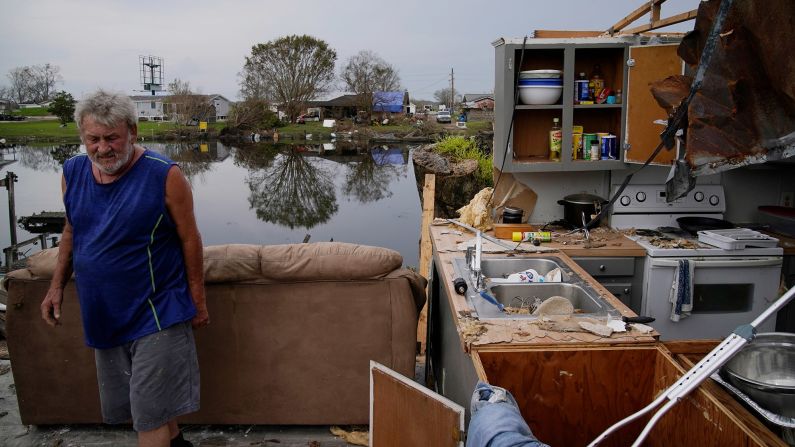Editor’s Note: Is your power out or device’s battery charge low? Bookmark CNN’s lite site for text-only top stories.
Viewing the aftermath of Hurricane Ida from the air, US Coast Guard Vice Adm. Steven Poulin saw utter devastation.
“It was catastrophic,” he told CNN’s “Erin Burnett OutFront.” “My heart breaks for the people in Louisiana.”
Poulin said the pictures he’s seen in the media don’t reveal the extent of the storm’s wrath.
Officials have said at least two people died because of Sunday’s Category 4 hurricane, but that’s a number the governor said he expects will rise.
In Louisiana on the day after the storm, some neighborhoods were underwater and many streets were full of debris.
More than 1 million homes and businesses were without power, and that could be the case for many residents for days or weeks.
And Ida, now a slow-moving tropical depression over Mississippi, is still threatening to flood communities not just in the Deep South but also into the Tennessee and Ohio valleys as it crawls north over the next few days.
Sign up for email updates for significant storms
In Louisiana, rescue and recovery efforts were well underway in parts of the state where Ida slogged through for hours as a Category 4 hurricane.
In St. John the Baptist Parish, where 17 inches of rain and 5 feet of storm surge flooded the area just northwest of New Orleans, nearly 800 people had to be rescued Monday.
“This is one of the worst natural disasters I’ve ever seen in St. John,” parish President Jaclyn Hotard said.
While damage was immense, there were no reports of any deaths, she said.
Communities hit by Ida could see power outages that last weeks
The good news for Louisiana, according to Gov. John Bel Edwards, was none of the state’s levees failed, though some were overtopped.
The governor said that, while Ida was an extremely catastrophic hurricane, the “silver lining” was that the state’s levee systems performed extremely well, particularly the one in the metropolitan New Orleans Area.
“There were a few smaller levees that were overtopped, to some degree, and for some duration of time and that did result in some people’s homes are being flooded,” Edwards said. “But they did not fail.”
Still, storm damage had left more than 1 million customers in Louisiana without power as of Monday night, according to PowerOutage.US.
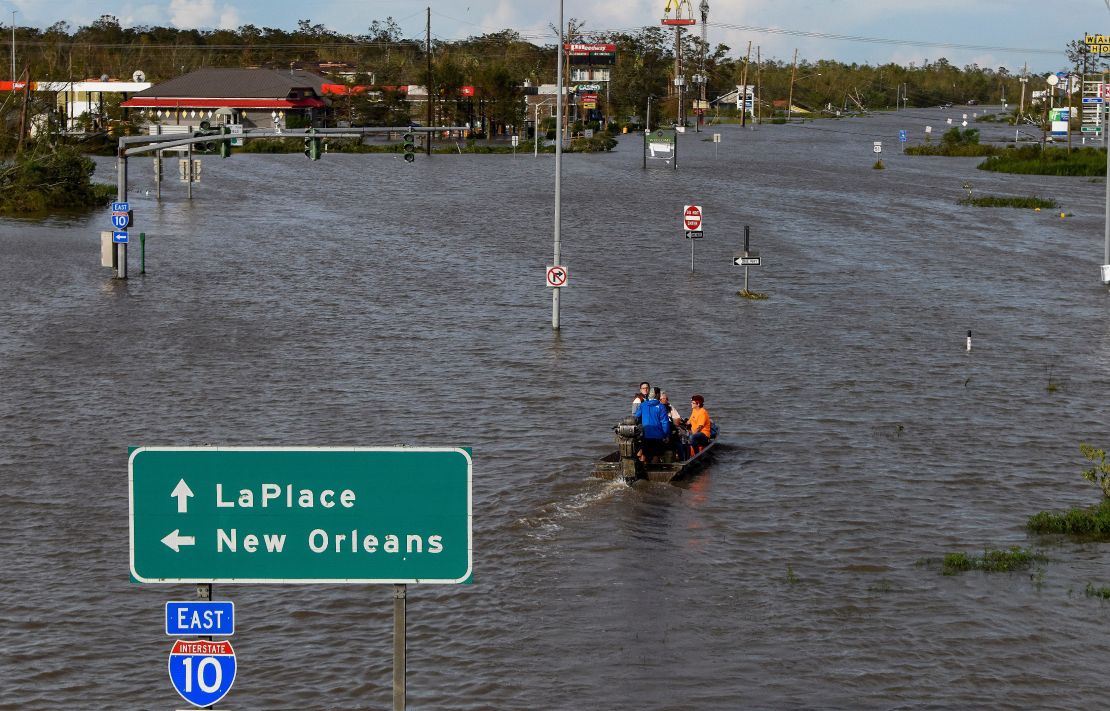
Entergy Louisiana said some of its customers could be without power for three weeks.
“While 90% of customers will be restored sooner, customers in the hardest-hit areas should plan for the possibility of experiencing extended power outages,” the company said.
Without power for things such as air conditioning in the summer heat, the power outages could be deadly, New Orleans City Councilmember Joe Giarrusso said.
A Facebook post from St. Charles Parish said it was “highly likely” the outages could extend a month.
It was one of the cities and parishes on Monday afternoon that were letting people who evacuated know whether it was safe to return.
“If you evacuated and can stay in place for a few more days, we highly advise it,” officials said in the post. “When you do return, you will need to bring everything you need for at least a week including food, ice, water and fuel.”
New Orleans also said to wait, tweeting: “If you have evacuated out of #NOLA, we request that you DO NOT RETURN until further notice. There is widespread debris, power remains out, and emergency services are working to respond to those still in the city. We will let you know when it is safe to come home.”
St. Bernard Parish announced residents could come back but only if they could deal without electricity for a few days.
Other communities were still trying to assess the damage.
Rescuers hampered by poor phone service
Rescuers were getting numerous reports of people who climbed into attics or onto roofs as waters rose in their homes, especially in parishes just outside New Orleans.
About 15 people were helped off roofs and into boats early Monday in the city of Slidell alone, and rescuers in high-water vehicles still were taking people to safety in the lower side of town in the late morning, Mayor Greg Cromer said.
Because cell phone service was sporadic in much of the region, rescuers sometimes were having to find for themselves who needed help.
“We’ve had some people that … waded out (of neighborhoods) and flagged police officers down and told us what is going on,” Cromer, whose city is northeast of New Orleans, told CNN on Monday morning.
“Seems like there’s hundreds, possibly more, people trapped in their houses, with some extent of water – from a foot deep to people in the attics,” Jordy Bloodsworth, fleet captain of the Louisiana Cajun Navy volunteer rescue group, told CNN earlier Monday morning.
In pictures: Hurricane Ida devastates Gulf Coast
Woman says family had to escape to the attic
In LaPlace, Tiffany Miller was stuck in her attic Sunday night after floodwaters came into her home, she said. Perhaps 3 to 5 feet of water had entered homes in her subdivision, she told CNN affiliate WDSU.
“When we got in the attic, the water was right below my knees,” Miller said. “I know that we’re not in it by ourselves, and it’s going to be OK.”
Paul Middendorf, volunteering with the Crowdsource Rescue group, paddled solo through LaPlace in a canoe and ferried dozens of people Monday from their flooded homes, he said.
“Most of (the rescues) were in the attic,” he said. “The water in the back of that neighborhood was about 10 feet deep or higher.”
The United Cajun Navy, a separate volunteer rescue group, made more than 300 rescues by noon Monday, including in Houma, a roughly 60-mile drive southwest of New Orleans, Todd Terrell, the group’s president, said.
Governor ‘fully expects the death count will go up’
Ida made landfall Sunday near southeastern Louisiana’s Port Fourchon as a Category 4 hurricane around 1 p.m. and slowly scraped across the state, delivering catastrophic winds and torrential rain to the same places for hours.
Video from these areas showed parts of roofs flying off homes and businesses, fallen trees lying on cars and homes, and high water taking over roads and communities in southeastern Louisiana and southern Mississippi.
In hard-hit Houma, some buildings were leveled, and others were missing pieces of roofing.

Lionel Hawkins and his wife stayed in their house as the storm hit; it sounded bad, so they knelt and prayed, he said.
“Went down and got on a knee and asked the Lord … to protect us. Give us another opportunity to breathe,” Hawkins told CNN on Monday. His home still stands, though the roof is damaged and the carport was blown apart.
Houma is in Terrebonne Parish, where water was still high in the southern part of the parish Monday afternoon. Many roads were blocked by debris blown by the storm.
“Before we can begin the systematic process of letting residents and evacuees back into the parish, roads must be cleared and down power lines must be checked,” said parish President Gordon Dove.
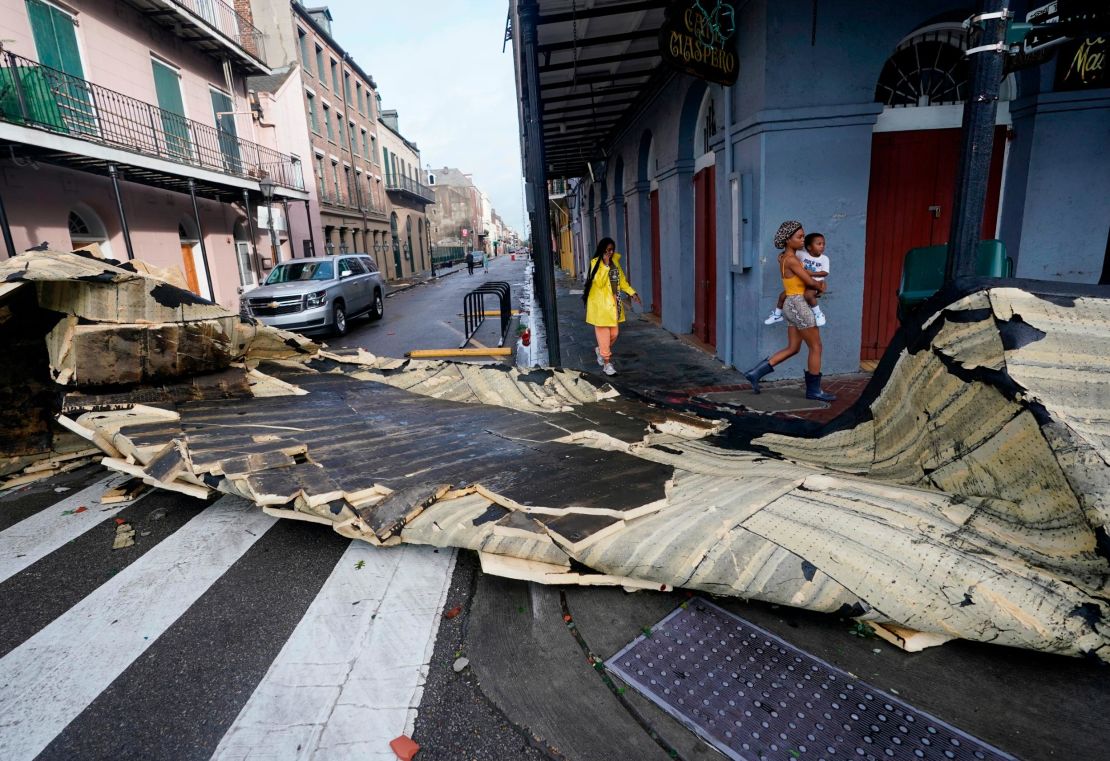
St. Tammany Parish President Mike Cooper told CNN his parish has experienced damage to personal property and homes, and widespread power outages, but there were no immediate reports of deaths or injuries.
St. Bernard Parish Sheriff James Pohlmann during a briefing on Monday afternoon said the parish fared well during Hurricane Ida, with virtually no flooding inside the levee system, and encouraged residents who had evacuated to return if they chose to, as all entries into the parish are open.
“If you can come home and you have a generator and you think you can be comfortable without electricity for at least a few days, then come on back,” Pohlman said. “We’re here to protect you and we want you back.”
Council Member Richard Lewis said only a few gas stations were open and the wait for fuel was four to five hours.
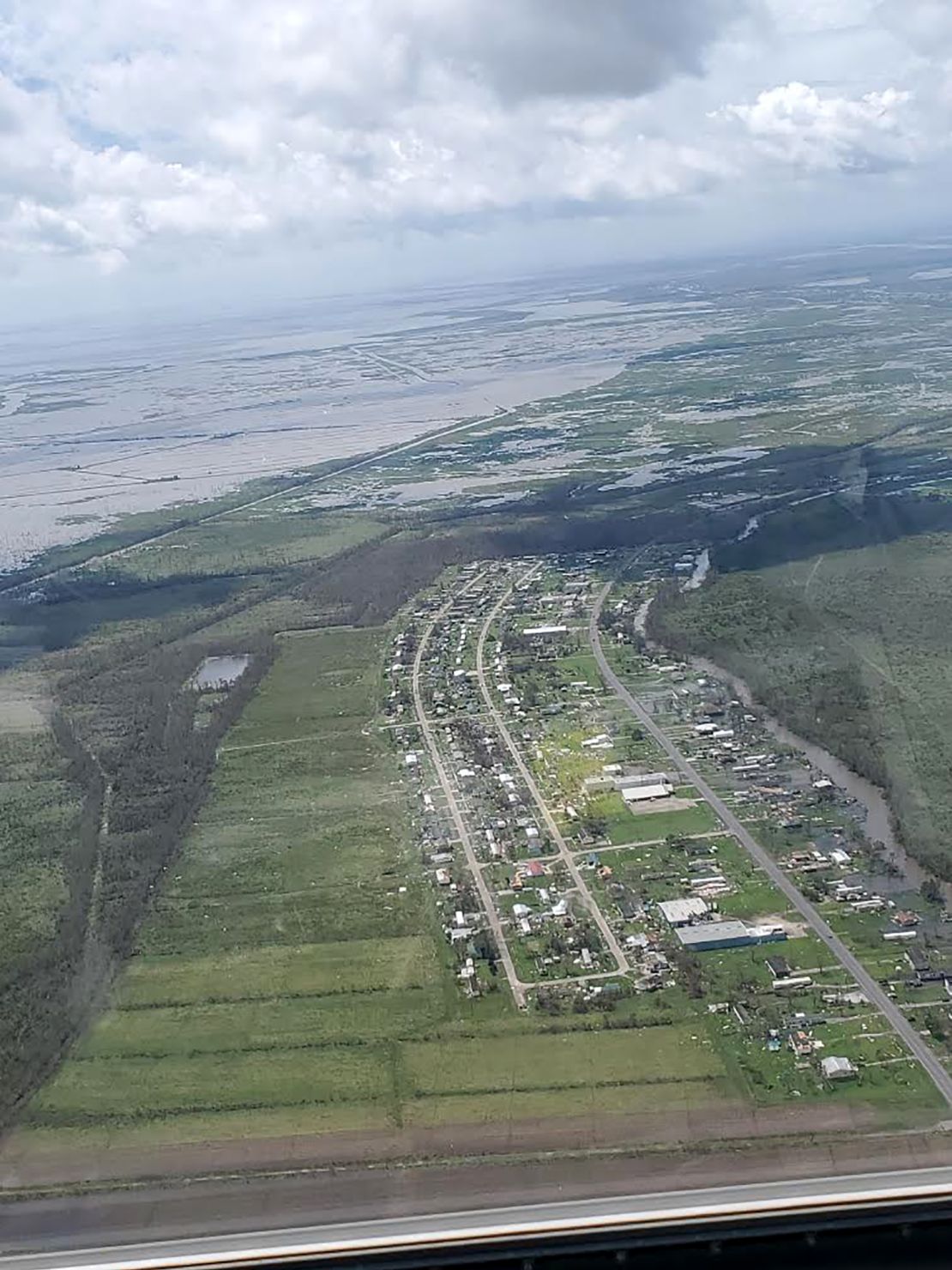
Gov. Edwards urged residents to check on their neighbors but otherwise refrain from traveling Monday morning because of flooded roadways, debris and downed power lines.
Edwards “fully expects the death count will go up considerably throughout the day” as searches and rescues go on, he told MSNBC on Monday.
“We know that individuals are out there waiting to be rescued because their homes are not habitable. … Please know that we have thousands of people out right now with high water vehicles and boats who are doing search and rescue,” the governor said in a video posted on Twitter.
According to the state Department of Health, one of the two known deaths occurred when a man drowned after trying to drive through floodwater near I-10 and West End Blvd in New Orleans.
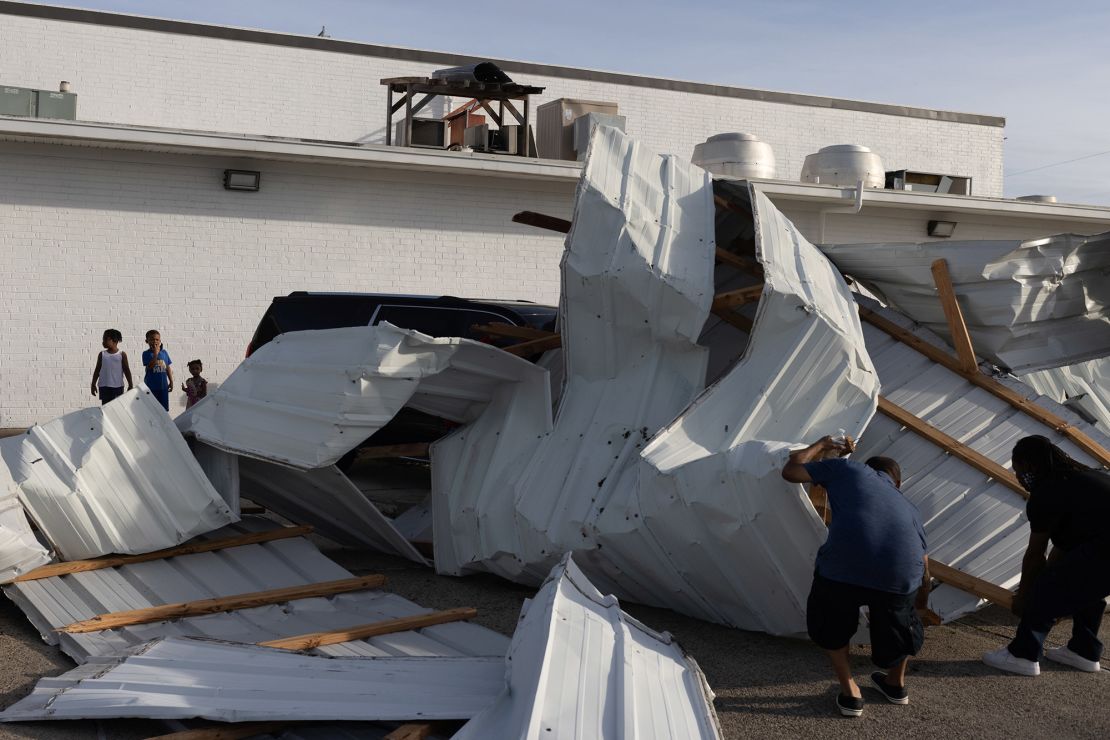
Ida slammed into Louisiana on the 16th anniversary of Hurricane Katrina, tying with 2020’s Hurricane Laura and the Last Island Hurricane of 1856 as the strongest ever to hit the state.
In New Orleans on Monday, resident Judy Arabie surveyed her neighborhood, where a utility pole and transformer had fallen onto a car. During the storm, part of her roof was torn open – and she couldn’t sleep as the storm went through overnight.
“Last year we had (Hurricane) Zeta, and electricity was out for about five days, but it was nothing compared to this – the winds, the gusts, the shingles flying everywhere,” Arabie said.
In part of Plaquemines Parish, southeast of New Orleans, flash flooding was reported early Monday morning after a levee failed near Highway 23, according to the National Weather Service.
Authorities were rushing to evacuate people in the Jesuit Bend area there as water rushed up the highway, Louisiana Lt. Gov. Billy Nungesser said Monday.
‘This is turning into a rainmaker’
Ida will threaten more flooding Monday in the Deep South and elsewhere as it marches north over the next few days.
“It’s the rainfall that we’re worried about now. This is turning into a rainmaker,” CNN meteorologist Chad Myers said Monday morning.
A few more inches of rain could fall Monday in southern parts of Louisiana and Mississippi, bringing storm totals there to 10 to 24 inches, the National Hurricane Center said.
Coastal Alabama to the far western Florida Panhandle could get storm totals of 6 to 15 inches of rain through Tuesday. Central Mississippi to far western Alabama could get 4 to 12 inches of rain through Monday.
The National Weather Service office in Jackson, Mississippi, tweeted: “Gusty winds, heavy rain, & some tornado threat will spread E-NE through the afternoon. Power outages, downed trees & powerlines & flash flooding remain possible.”
More than 82,000 customers were without power in Mississippi, PowerOutage.US reported.
The storm is expected to turn northeast Monday and head to the middle Tennessee Valley and Upper Ohio Valley through Wednesday. That could pose further flooding problems in parts of Middle Tennessee that are still recovering from a flood emergency last weekend.
The Middle Tennessee Valley, Ohio Valley, the central and southern Appalachians and the Mid-Atlantic could generally receive 3 to 6 inches of rain through Wednesday, the hurricne center said.
CNN’s Rebekah Riess, Paul P. Murphy, Amanda Watts, Jason Carroll, Nadia Romero, Gregory Lemos, Joe Sutton, Hollie Silverman, Keith Allen and Chris Boyette contributed to this report.





